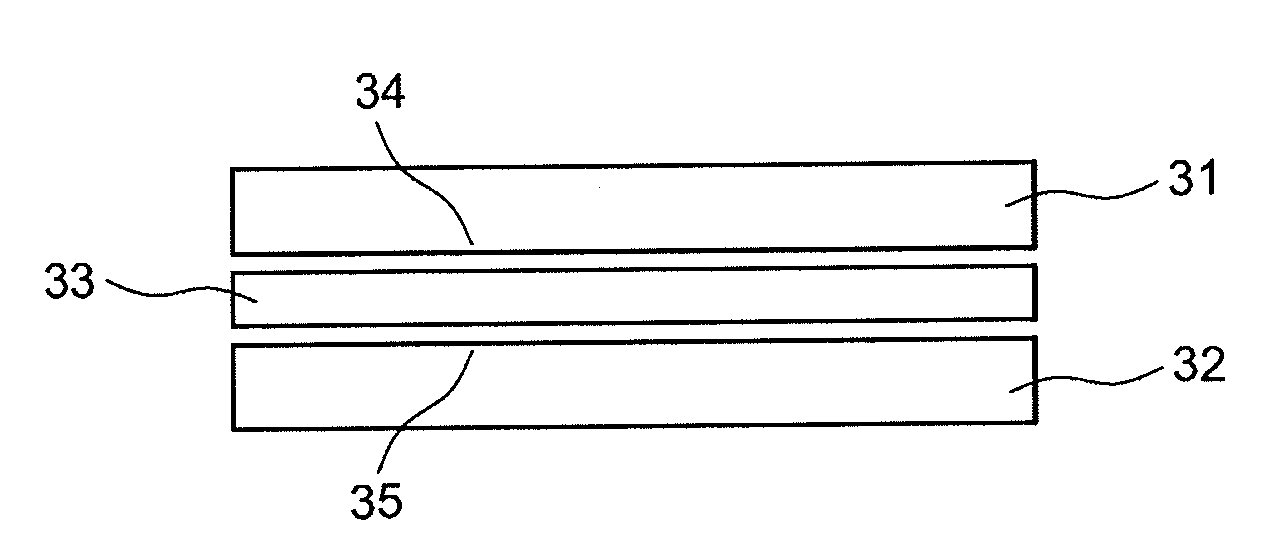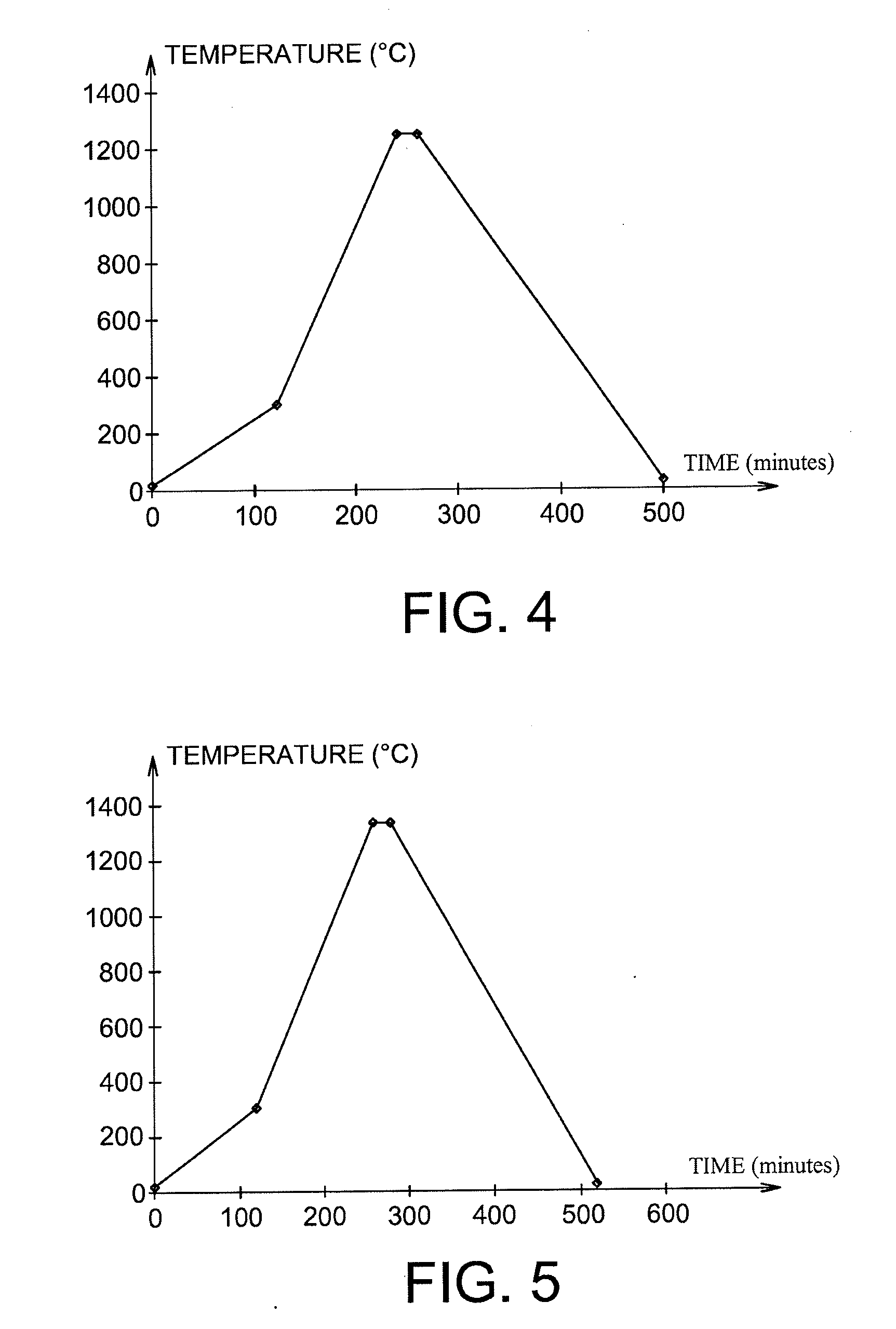Method for assembling parts made of sic materials by non-reactive brazing, brazing compositions, and joint and assembly obtained by said method
a technology of non-reactive brazing and composition, which is applied in the direction of metal-layer products, metal-working apparatus, metal coating processes, etc., to achieve the effect of reducing the spreading kinetics of si—y alloy and achieving the rapid wetting kinetics of the invention
- Summary
- Abstract
- Description
- Claims
- Application Information
AI Technical Summary
Benefits of technology
Problems solved by technology
Method used
Image
Examples
example 1
[0232]This example describes sessile drop tests carried out with a brazing composition, alloy of the invention composed of 48.7% by mass Si and 51.3% by mass Nd on pure sintered α-SiC, observing a single brazing (temperature) plateau at 1240° C.
a) Preparation of the Brazing Composition and Brazing Paste
[0233]The targeted brazing composition of 48.7% by mass Si and 51.3% by mass Nd was prepared from pieces of pure Si and pieces of pure Nd.
[0234]These pieces were weighed paying heed to the proportions of the brazing composition and placed in a crucible made of alumina. The whole was placed in a furnace and subjected to a heating cycle with a temperature hold at 1330° C. under argon for one hour.
[0235]After cooling, an ingot was thus obtained. This ingot was ground to obtain a powder.
[0236]An organic binder (NICROBRAZ® cement) was added to this powder mixture to form a viscous paste.
b) > Test at 1240° C.
[0237]The brazing paste thus prepared was used to form a small deposit of braze wei...
example 2
[0244]This example describes sessile drop tests conducted with a brazing composition, alloy according to the invention having a composition of 60% by mass Si and 40% by mass Nd on pure sintered α-SiC, observing a single brazing plateau at 1315° C.
a) Preparation of the Brazing Composition and Brazing Paste
[0245]The targeted brazing composition of 60% by mass Si and 40% by mass Nd was prepared from pieces of pure Si and pieces of pure Nd.
[0246]These pieces were weighed paying heed to the proportions of the brazing composition and placed in a crucible made of alumina. These were placed in a furnace and subjected to a heating cycle with a plateau at 1440° C. under argon for one hour. After cooling, an ingot was obtained. This ingot was crushed to obtain a powder.
[0247]An organic binder (NICROBRAZ® cement) was added to this powder mixture to form a viscous paste.
b) > Test at 1315° C.
[0248]The brazing paste thus prepared was used to form a small deposit of braze having a mass of about 50 ...
example 3
[0255]This example describes sessile drop tests conducted with a brazing composition, alloy of the invention having a composition of 80% by mass Si and 20% by mass Nd on pure sintered α-SiC, observing a single brazing temperature plateau at 1395° C.
a) Preparation of the Brazing Composition and of the Brazing Paste
[0256]The targeted brazing composition of 80% by mass Si and 20% by mass Nd was prepared from pieces of pure Si and pieces of pure Nd.
[0257]These pieces were weighed paying heed to the proportions of the brazing composition and placed in a crucible made of alumina. This was placed in a furnace and subjected to a heating cycle with a plateau at 1440° C. under argon for one hour. After cooling, an ingot was obtained. This ingot was crushed to obtain a powder.
[0258]An organic binder (NICROBRAZ® cement) was added to this powder mixture to form a viscous paste.
b) > Test at 1395° C.
[0259]The brazing paste thus prepared was used to form a small deposit of braze having a mass of ab...
PUM
| Property | Measurement | Unit |
|---|---|---|
| Temperature | aaaaa | aaaaa |
| Temperature | aaaaa | aaaaa |
| Temperature | aaaaa | aaaaa |
Abstract
Description
Claims
Application Information
 Login to View More
Login to View More - R&D
- Intellectual Property
- Life Sciences
- Materials
- Tech Scout
- Unparalleled Data Quality
- Higher Quality Content
- 60% Fewer Hallucinations
Browse by: Latest US Patents, China's latest patents, Technical Efficacy Thesaurus, Application Domain, Technology Topic, Popular Technical Reports.
© 2025 PatSnap. All rights reserved.Legal|Privacy policy|Modern Slavery Act Transparency Statement|Sitemap|About US| Contact US: help@patsnap.com



